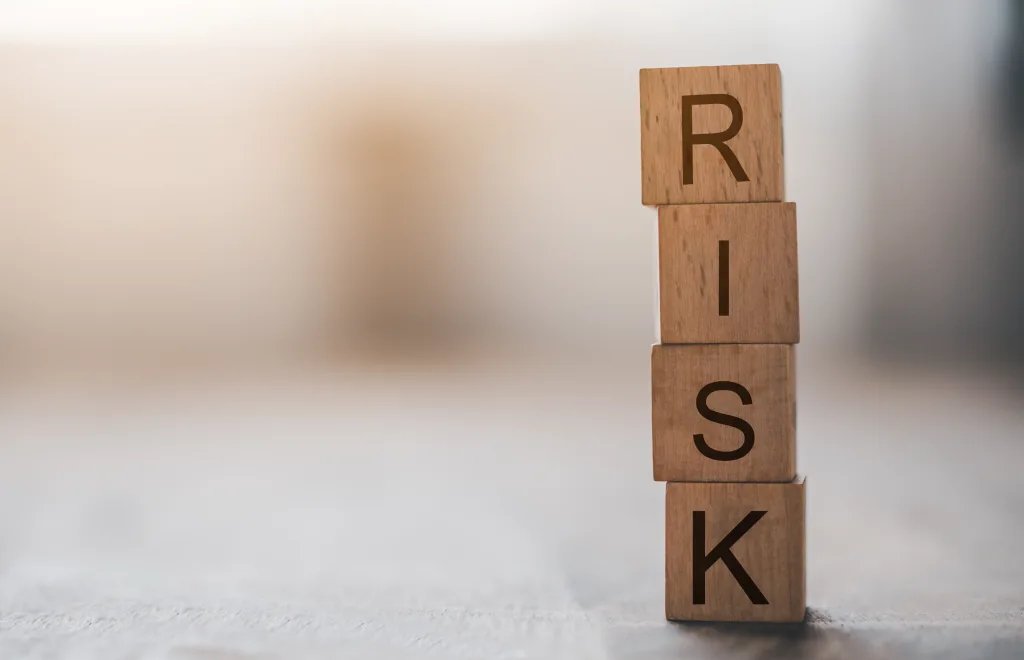Erstellung eines Risikomanagementplans für Projekte
Planung und Dokumentation sind zwei obligatorische Maßnahmen im Projektmanagement, da sie die Grundlage für einen Risikomanagementplan bilden.
Sie sind ein entscheidender Schritt für den Projekterfolg, denn sie legen fest, welche Maßnahmen ergriffen werden müssen, wer für was im Lebenszyklus des Projekts verantwortlich ist und wie auf Risiken und Hindernisse reagiert werden soll.
Dieser Plan dokumentiert potenzielle Risiken für eine Organisation und ein Projekt sowie die Schritte, die das daran arbeitende Team unternehmen wird, um die Risiken zu mindern und zu bewältigen.
Unabhängig von seinem Umfang (er kann alle Gruppen in der Organisation oder nur den Projektleiter und sein Team einbeziehen) legt ein Risikomanagementplan fest, wie potenzielle Risiken zu ermitteln sind und wie eine Risikoanalyse durchzuführen ist.
Lesen Sie unseren Leitfaden, um zu erfahren, was das ist und wie man einen Risikomanagementplan für ein Projekt erstellt. Hier finden Sie alles, was Sie darüber wissen müssen.
Was ist ein Projektrisikomanagementplan im Projektmanagement?
Ein Projektmanagement-Risikoplan ist ein Dokument, in dem dargelegt wird, wie der Risikomanagementprozess eines Projekts durchgeführt wird. Er legt fest, wie das Risikomanagement angegangen werden soll: Mittel, welche Instrumente zur Ermittlung, zum Verständnis und zur Bewältigung der mit dem Projekt verbundenen Risiken eingesetzt werden und welche Aufgaben die einzelnen Teammitglieder beim Risikomanagement haben.
Dieser Plan sollte bereits vor Beginn des Projekts festgelegt werden und den Projektmitarbeitern als ständige Referenz dienen.
Er ist kein statischer Plan und kann angepasst werden, aber er muss sicherstellen, dass der Prozess des Risikomanagements funktioniert und dass die Risiken angegangen werden.
Ein solcher Plan kann sich an diesen Fragen orientieren:
- Worum handelt es sich bei diesem Projekt, und warum wird jetzt daran gearbeitet?
- Was wird das Team tun, um Risiken während des gesamten Projekts zu identifizieren, zu protokollieren, zu bewerten und zu überwachen?
- Welche Risikokategorien werden wir verwalten?
- Welche Methodik wird zur Bewertung der Schwere des Risikos verwendet?
- Wer trägt die Risiken, und was wird von ihm erwartet?
- Wie viel Risiko ist zu viel Risiko?
- Welche Risiken bestehen, und was werden wir während der Projektlaufzeit dagegen unternehmen?
Lesen Sie auch: Wie verfolgt man den Fortschritt eines Projekts?
8 Vorteile eines Projektrisikomanagementplans
Ein Risikomanagementplan ist ein obligatorischer Bestandteil des Projektmanagements.
Diese Art von Plan ermöglicht es den Projektmanagern, die Gesamtheit ihres Plans aus jeder Perspektive zu überblicken und alle benötigten Ressourcen zu überprüfen.
Dies sind die wichtigsten Vorteile der Erstellung und Durchsetzung eines Plans.
1. Identifizierung von Problemen
Diese Identifizierung von Problemen und Risiken ist von Anfang an notwendig, um das Problem zu bewerten und eine Lösung zu finden.
In einem Risikomanagementplan werden die Risiken in Stein gemeißelt, so dass sie während des Projektverlaufs ständig präsent sind.
Lesen Sie auch: Was ist Projektmanagement-Berichterstattung?
2. Bessere Datenqualität
Um bessere Entscheidungen treffen zu können, sind qualitativ hochwertige Daten erforderlich. Um einen Risikomanagementplan für ein Projekt zu erstellen, müssen Informationen gesammelt werden, insbesondere technische Informationen, wenn sie für Ihr spezifisches Projekt relevant sind.
Die Strukturierung des Plans wird die treibende Kraft bei der Sammlung möglichst vieler Daten sein.
3. Bessere Kommunikation
Der Plan wird auch eine bessere und effizientere Art und Weise der Kommunikation von Risikoinformationen innerhalb der Organisation erfordern.
TIPP: Holen Sie sich die besten Tipps zur Verbesserung Ihrer Teamkommunikation.
4. Vermeidung von mehr Risiken und Überraschungen
Ein solider und umfassender Risikomanagementplan ist eine große Hilfe, um unerwartete negative Überraschungen und neue Risiken abzufedern.
5. Bessere Einhaltung des Haushaltsplans
Alle in dieser Liste aufgeführten Faktoren führen zu einer erfolgreichen Umsetzung und einer besseren Anwendung der Haushaltsmittel von Beginn des Projekts an.
In unserem Blog erfahren Sie, warum Zeitbudgetierung für das Projektmanagement wichtig ist.
6. Vermeidung von Ablenkungen im Team
Wenn die Rollen der Teammitglieder klar sind und sie wissen, was von ihnen erwartet wird, können sie ihre Leistung jederzeit einbringen.
Ein guter Risikomanagementplan wird auch realistische Ziele und Erwartungen bei allen Beteiligten schaffen.
7. Effektivere Einhaltung der Prozesse
Formale Prozesse, die in einem Risikomanagementplan festgelegt sind, werden effektiver eingehalten, so dass Probleme und Fragestellungen leichter verwaltet und gelöst werden können.
8. Mehr proaktive Antworten
Die Fähigkeit zum Risikomanagement ist für jeden Projektleiter eine entscheidende Fähigkeit. Das Vorhandensein eines Risikomanagementplans wird dem Team helfen, proaktiv auf Risikoereignisse zu reagieren. Proaktiv statt reaktiv zu sein, ist für das Projekt und sein Ergebnis von Vorteil.

Wie man einen Risikomanagementplan für ein Projekt erstellt
Jeder einzelne dieser Schritte kann an das jeweilige Projekt angepasst werden, wobei es sich um einen allgemeinen Entwurf der erforderlichen Schritte handelt.
1. Sammeln Sie alle erforderlichen Unterlagen
Laut den besten Projektmanagement-Blogs und den besten pm-Kursen gibt es unterstützende Dokumente, die bei der Planung eines Risikomanagementplans für ein Projekt unbedingt erforderlich sind. Dies sind die Projektcharta, der Projektmanagementplan und das Stakeholder-Register.
In diesem letzten Dokument werden Informationen über die Projektbeteiligten und die verschiedenen mit ihnen verbundenen Risiken gesammelt.
Der Projektmanagementplan gibt einen Überblick über alle Methoden, die für die Verwaltung und Überwachung des Projekts eingesetzt werden, und die Projektcharta legt die Formalitäten fest, z. B. wer der Projektleiter ist und was die Endziele des Projekts sind.
2. Kontext bereitstellen
Jetzt ist es an der Zeit, den Kontext zu erläutern, den geschäftlichen Wert des Projekts zu verstehen und die negativen Auswirkungen zu erklären, die die Risiken haben können.
Die negative Auswirkung ist letztlich das Scheitern des Projekts. Der Kontext wird bei der Diskussion des Risikomanagements mit dem Team von Nutzen sein.
Lesen Sie auch: Alles, was Sie zum Leiten eines Meetings brauchen
3. Festlegung der Methodik zur Ermittlung/Bewertung von Risiken
Die gewählten Methoden zur Ermittlung von Risiken müssen für das Team während der gesamten Projektdauer tragfähig und natürlich an verschiedene Projektarten anpassbar sein.
In einem Brainstorming mit den Teammitgliedern und Interessengruppen wird festgelegt, welche Risikokategorien bei diesem Projekt in Frage kommen und wie darauf reagiert werden soll. Es ist auch gut, die Schweregradskala für jede Risikokategorie festzulegen.

4. Identifizieren Sie die Risiken
Nun ist es an der Zeit, über all die Dinge nachzudenken, die während des Lebenszyklus eines Projekts schief gehen können. Ein weiteres Gruppen-Brainstorming oder ein Risiko-Workshop könnte eine gute Idee sein, um spezifische Risiken zu identifizieren, zu bewerten und die Reaktion darauf zu planen.
Es ist ratsam, sich einen Überblick über das Projekt aus der Sicht aller Beteiligten zu verschaffen: Teammitglieder, Stakeholder und Sponsoren, um zu vermeiden, dass ein bestimmtes Risiko übersehen wird, das möglicherweise nicht berücksichtigt wurde.
Es ist auch hilfreich, sich frühere Projekte anzusehen, die Aufschluss darüber geben können, was bei dem aktuellen Projekt schief gehen kann bzw. schief geht.
5. Zuweisung von Verantwortlichen für die identifizierten Risiken
Sobald die Risiken identifiziert sind, müssen sie einem Verantwortlichen zugeordnet werden. Ein Projektleiter ist nicht für alle Risiken verantwortlich, sondern für die Auswahl der richtigen Person, die sich mit dem Problem befassen soll, wobei die Fähigkeiten, die Erfahrung und das Fachgebiet der Person zu berücksichtigen sind.
Es ist wichtig sicherzustellen, dass alle Risikoverantwortlichen ihre Zuständigkeiten kennen und jederzeit Zugang zum Risikomanagementplan haben und diesen lesen können.
Erfahren Sie, wie die Wasserfall-Projektmanagementmethode Ihnen helfen kann, Ihre Managementfähigkeiten zu verbessern.
6. Verwenden Sie das Risikoregister, um den Überblick zu behalten
Verwenden Sie das Risikoregister, um alles in allen Phasen zu dokumentieren, insbesondere nach der Identifizierung und Zuweisung der Verantwortlichkeiten. Dieses Register kann auch Fotos enthalten, wenn während der Workshops und Brainstorming-Sitzungen Bildmaterial verwendet wird.
Ein Risikoregister auf dem neuesten Stand zu halten, mag wie eine zeitraubende bürokratische Aufgabe erscheinen, ist aber von grundlegender Bedeutung für das Risikomanagement. Jedes Risiko und seine wichtigsten Details werden registriert und dann nach Schlüsselbereichen analysiert: Beschreibung, Kategorie der Risikoreaktion, Risikoreaktion und Risikoverantwortlicher. Auf diese Weise kann eine Korrelation zwischen den Risiken hergestellt werden, falls sie existieren.

7. Ständige Überwachung der Risiken
Natürlich müssen die Risiken bis zu ihrer Beseitigung überwacht werden. Der Bauherr muss den Projektleiter durch Anrufe oder E-Mails auf dem Laufenden halten, damit er sich ein genaues Bild vom Gesamtfortschritt des Projekts machen kann.
Halten Sie das Risikoregister zeitnah auf dem neuesten Stand. Wenn es im Rahmen Ihrer Projektbedingungen möglich ist, empfiehlt es sich, während des Projekts regelmäßig Risikoworkshops durchzuführen.
Lesen Sie auch: Erstellung eines Projektüberwachungsplans
8. Sicherstellen, dass der Risikomanagementplan zugänglich ist
Das Risikoregister eines jeden Projekts kann als Referenz und als Grundlage für künftige Projekte von Nutzen sein.

Zusätzliche Tipps für die Erstellung eines perfekten Risikomanagementplans für Projekte
Um den Risikomanagementplan eines Projekts weiter zu stärken, können einige zusätzliche Gewohnheiten und Tipps hilfreich sein. Hier sind ein paar Beispiele:
- Vermeiden Sie Multitasking - die Bearbeitung risikobezogener Aufgaben erfordert Ihre volle Aufmerksamkeit. Vermeiden Sie es also, sich mit anderen Aufgaben zu befassen, während Sie sich auf das Risiko konzentrieren, denn Multitasking verringert die Produktivität.
- Verwenden Sie Zeiterfassungstools - Zeiterfassungstools sind praktisch, denn sie helfen Ihnen, die Dauer von Workshops, die Zeiträume für die Risikoerfassung, zeitkritische Risiken, Blockzeiten für die volle Konzentration usw. zu verfolgen (und aufzuzeichnen). Ein Zeiterfassungstool hilft Ihnen auch bei der Erstellung besserer Zeiteinschätzungen für Ihr Projekt und Ihre Aufgaben. TIPP: Die Zeiterfassungsfunktionen vonEARLY können hier sehr nützlich sein.
- Dokumentieren Sie alles gut - Führen Sie neben den vorgeschriebenen Unterlagen auch Notizen über Besprechungen an und wickeln Sie Vorgänge per E-Mail ab, damit es immer eine Aufzeichnung gibt.
Inwiefern ist ein Risikomanagementplan für das Projektmanagement von grundlegender Bedeutung?
Jedes Projekt, das von einem Team oder einer Organisation durchgeführt wird, birgt ein gewisses Risiko in sich.
Es ist eine Art Interpretation des Gesetzes von Murphy, aber weniger dramatisch: Alles, was schief gehen kann, wird auch schief gehen. Um das Auftreten unerwünschter Risiken zu vermeiden, ist die Dokumentation, die den Risikomanagementplan des Projekts bildet, von wesentlicher Bedeutung.
Jeder Schritt dieses Plans trägt dazu bei, Szenarien zu identifizieren und zu antizipieren, die das Projekt gefährden können, sowie Möglichkeiten zur Minderung des Risikos und zur Bewältigung der verursachten Probleme. Das Fehlen eines Risikomanagementplans gefährdet die gesamte in das Projekt investierte Arbeit und verhindert schnell, dass das gewünschte Ergebnis erreicht wird. Das Risikomanagement ist bei der Projektinitiierung, -planung und -durchführung von entscheidender Bedeutung.
Schlussfolgerung
Die Definition und Strukturierung eines Risikomanagementplans erfordert Zeit, ist aber die bestmögliche Investition im Sinne des Projektmanagements.
Ein guter Risikomanagementplan für ein Projekt ist gleichbedeutend mit einer soliden Grundlage für Ihr Projekt. Er kann Zeit und Geld sparen, das Stressniveau senken und eine hervorragende Unterstützung für ein Arbeitsteam sein.
Die Festlegung eines solchen Plans ist eine Möglichkeit, den Weg zum Erfolg zu ebnen, indem der Ermittlung von Risiken Priorität eingeräumt wird und die Vorbereitung auf die Bewältigung solcher Probleme ermöglicht wird.
Die Zusammenarbeit und die Kommunikation werden durch einen guten Risikomanagementplan für das Projekt verbessert, da dem Projekt eine zusätzliche Sicherheitsebene hinzugefügt wird.
FAQ
Wer ist für das Risikomanagement in einem Projekt verantwortlich?
Das Risikomanagement gehört in der Regel zu den Aufgaben des ranghöchsten Mitglieds eines Projektteams, das von Risikomanagement-Experten unterstützt werden kann.
Wer genehmigt den Risikomanagementplan?
Der Risikomanagementplan wird in der Regel vom Projektleiter oder dem ranghöchsten Mitglied des Unternehmens/der Firma genehmigt.
Was sind die Schritte des Projektrisikomanagements?
Die wichtigsten Schritte des Projektrisikomanagements sind Identifizierung, Analyse, Priorisierung, Zuweisung, Überwachung und Reaktion darauf.
Welches sind die besten Instrumente für das Risikomanagement?
Zu den Risikoanalysewerkzeugen gehören eine Monte-Carlo-Simulation, eine Risikomatrix, ein Risikostrukturplan und Werkzeuge zur Informationssammlung wie der Risikomanagementplan selbst. Viele Software auf diesem Markt fasst all dies zusammen, wie SAP Risk Management, AuditBoard, Proofpoint Intelligent Compliance, A1 Tracker und andere.
Wie lautet die Formel für die Risikomatrix?
Eine Risikomatrix ist eine Formel, die zur Risikobewertung verwendet wird. Eine ihrer Achsen dient dazu, die Wahrscheinlichkeit eines Risikos zuzuordnen, die andere dazu, die Folgen oder den Schweregrad zu bestimmen. Risiko ist also gleich Wahrscheinlichkeit mal Schweregrad.